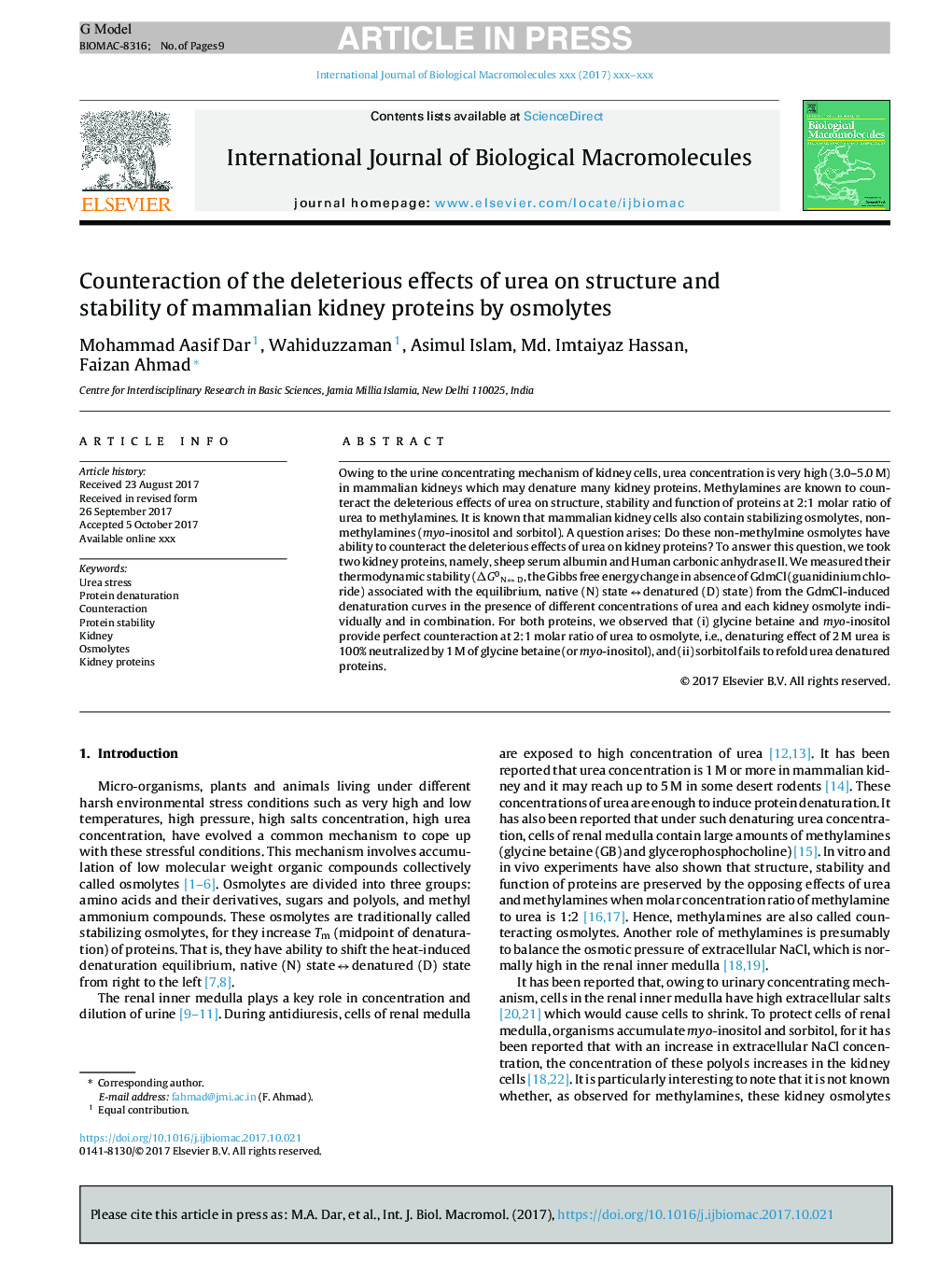| Article ID | Journal | Published Year | Pages | File Type |
|---|---|---|---|---|
| 8328745 | International Journal of Biological Macromolecules | 2018 | 9 Pages |
Abstract
Owing to the urine concentrating mechanism of kidney cells, urea concentration is very high (3.0-5.0 M) in mammalian kidneys which may denature many kidney proteins. Methylamines are known to counteract the deleterious effects of urea on structure, stability and function of proteins at 2:1 molar ratio of urea to methylamines. It is known that mammalian kidney cells also contain stabilizing osmolytes, non-methylamines (myo-inositol and sorbitol). A question arises: Do these non-methylmine osmolytes have ability to counteract the deleterious effects of urea on kidney proteins? To answer this question, we took two kidney proteins, namely, sheep serum albumin and Human carbonic anhydrase II. We measured their thermodynamic stability (ÎG0N â D, the Gibbs free energy change in absence of GdmCl (guanidinium chloride) associated with the equilibrium, native (N) state â denatured (D) state) from the GdmCl-induced denaturation curves in the presence of different concentrations of urea and each kidney osmolyte individually and in combination. For both proteins, we observed that (i) glycine betaine and myo-inositol provide perfect counteraction at 2:1 molar ratio of urea to osmolyte, i.e., denaturing effect of 2 M urea is 100% neutralized by 1 M of glycine betaine (or myo-inositol), and (ii) sorbitol fails to refold urea denatured proteins.
Related Topics
Life Sciences
Biochemistry, Genetics and Molecular Biology
Biochemistry
Authors
Mohammad Aasif Dar, Wahiduzzaman Wahiduzzaman, Asimul Islam, Md. Imtaiyaz Hassan, Faizan Ahmad,
